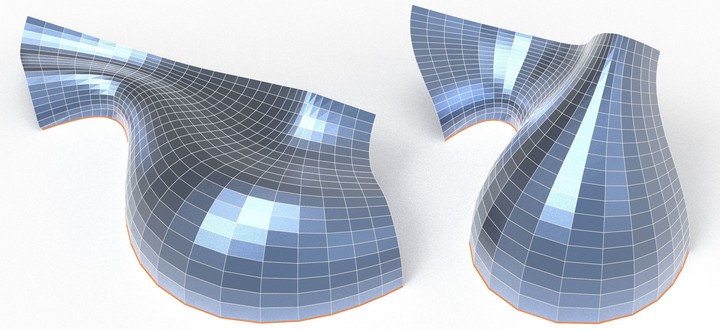Quad mesh mechanisms
 By Caigui Jiang
By Caigui Jiang
Abstract
This paper provides computational tools for the modeling and design of quad mesh mechanisms, which are meshes allowing continuous flexions under the assumption of rigid faces and hinges in the edges. We combine methods and results form different areas, namely differential geometry of surfaces, rigidity and flexibility of bar and joint frameworks, algebraic geometry, and optimization. The basic idea to achieve a time-continuous flexion is time-discretization justified by an algebraic degree argument. We are able to prove computationally feasible bounds on the number of required time instances we need to incorporate in our optimization. For optimization to succeed, an informed initialization is crucial. We present two computational pipelines to achieve that, one based on remeshing isometric surface pairs, another one based on iterative refinement. A third manner of initial data proved very useful, We designe meshes which enjoy some, but not all properties of known classes of flexible meshes, such that there is still enough design freedom. Optimization towards flexibility of such results is surprisingly effective.
Supplementary notes can be added here, including code and math.